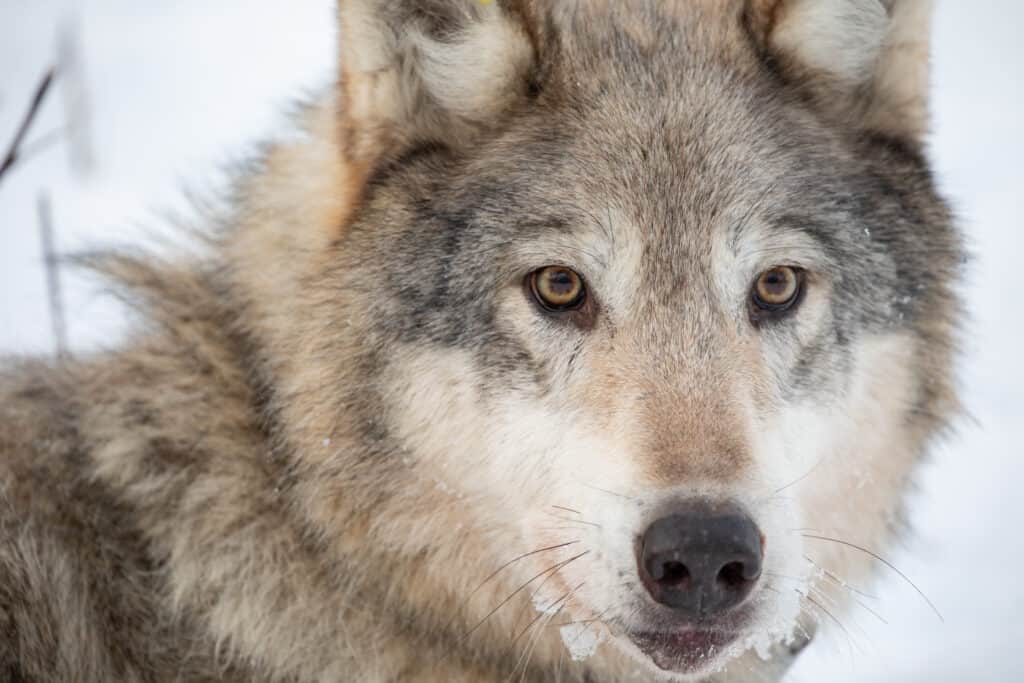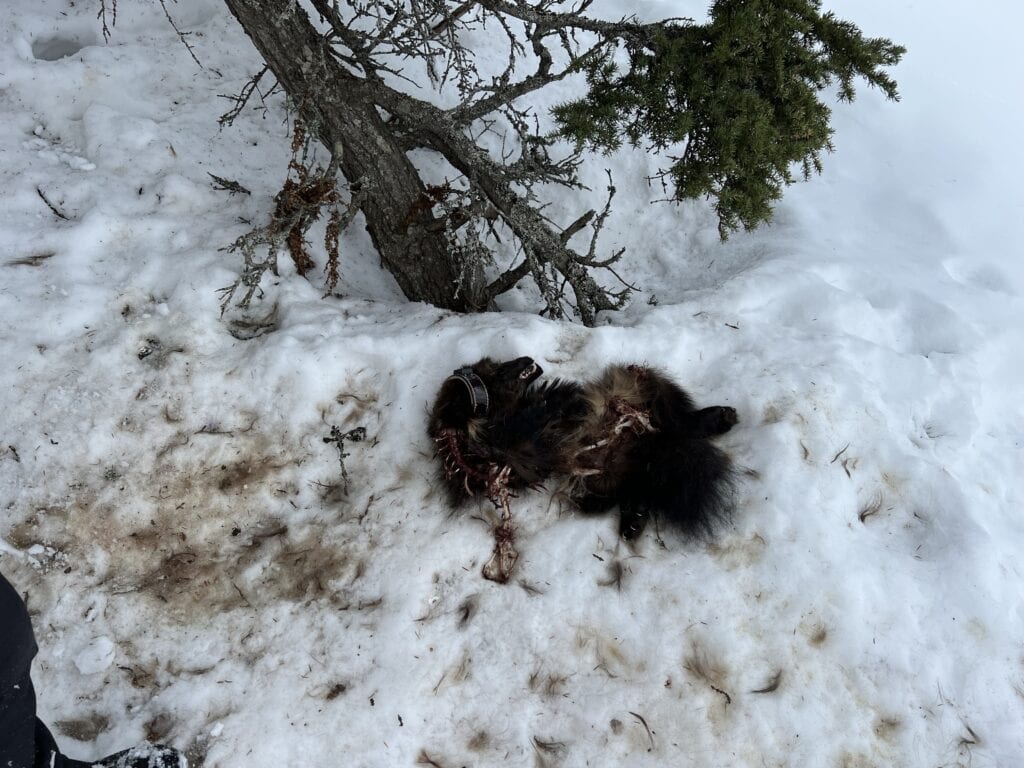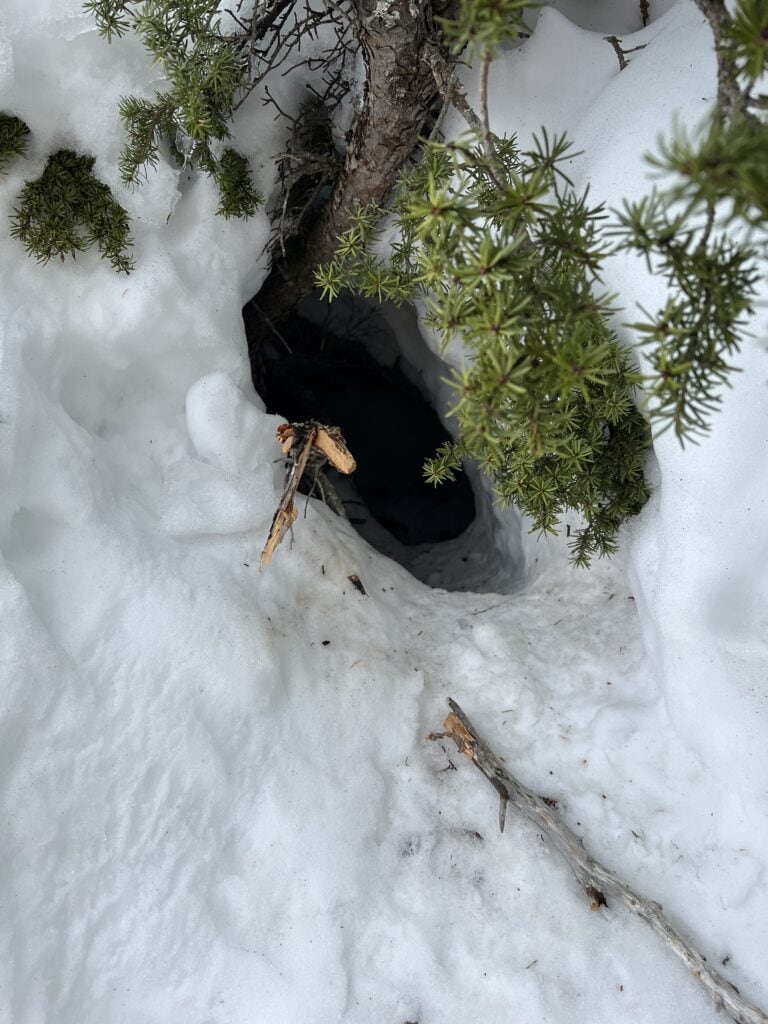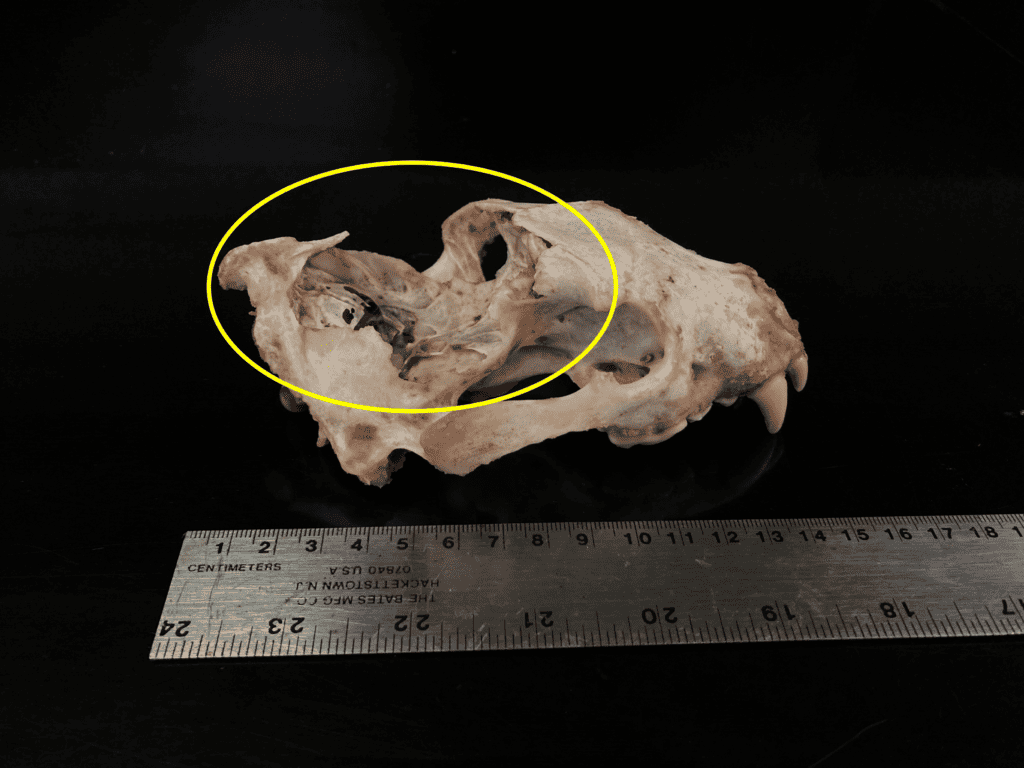It was a clear, sunny spring day in April, 2023 at Chugach State Park just east of Anchorage, Alaska, but the weather was still below freezing as Kiana Young searched for blood.
Young, a wildlife biologist with the Alaska Department of Fish and Game (ADFG) furbearer program, and her colleagues received an alert 11 days earlier that a wolverine fitted with a GPS collar had stopped moving in the mountainous forest terrain, suggesting it had died. But weather conditions were too cloudy and a helicopter wasn’t available to fly researchers in to check on why the adult female died, until now.
After spotting the wolverine’s den from a helicopter, the scientists hiked the steep, mixed forest to a creek, where they found the GPS collar and a moose (Alces alces) carcass. Traveling about 200-300 meters up from the den, they detected some blood. Then, they found the carcass of the female wolverine (Gulo gulo).
As Young and her colleagues detailed in a study published recently in Ecology and Evolution, the carcass was still mostly intact—there were really only signs of a few bites. “It had been picked over by birds and small animals,” Young said.

But without much to go on forensically, the team still had a good idea of what had happened to the wolverine. The ADFG and biologists from U.S. Joint Base Elmendorf-Richardson had also been tracking the movement of a wolf (Canis lupus) pack in the area for more than two years. Some of the individuals in the pack wore tracking collars, and their location data revealed a cluster of activity around the same area at about the time the wolverine’s movement stopped.
All of this may be chalked up to coincidence—wolves are known to scavenge carcasses, after all.
But this would have been the third case of wolf-on-wolverine violence in this area involving this pack, and the wolves didn’t appear to have eaten the carcass. These interactions are teaching wildlife managers more about the ways that top predators interact.
Killing pattern
The first incident occurred in March of 2022. Wildlife managers with ADFG were capturing wolves as part of their monitoring work when they happened upon a pack standing over the freshly killed carcass of an adult female wolverine.
The second case came in January, 2023. The researchers had been monitoring a juvenile male wolverine, when they received the signal that the animal had stopped moving. Weather conditions were bad, so a field crew couldn’t get there right away. An initial attempt to check out what happened was interrupted by another battle between predators—the wolf pack was chasing off a family group of four brown bears (Ursus arctos) near the wolverine carcass, and the crew called off the effort due to safety concerns.
“When we finally got the carcass, we saw it had puncture wounds that could be attributed to it being killed by wolves,” Young said.

Like the wolverine Young detected in April, 2023, the other two had also died around the time that tracking collar information placed the same wolf pack in their close vicinity. It could be coincidence, but necropsy reports and other evidence showed this was highly unlikely. Rather, it looked as though this pack was killing wolverines in the Chugach State Park area.
Further necropsies on the third wolverine killed revealed that its skull had been smashed in. The researchers hadn’t noticed that at first, since the skin on its head wasn’t broken. Young speculated that the wolves may have inflicted this trauma by swinging the wolverine into a rock or tree. “When they kill something, they tend to play around and move it,” she said.
Collateral damage
Young can’t be sure of what happened in the third case, but the presence of the moose carcass and the nearby wolverine den can provide some clues. Though the researchers didn’t examine the moose carcass in any detail, it’s possible that the wolf pack killed the moose. Since the wolverine den was nearby, the female might have also come out to feed on the moose carcass and encountered the wolves there. Or it could be that the wolverine was traveling to or from its den when it encountered the wolves feeding on the moose carcass.

What’s also curious is that the wolves don’t seem to have fed on any of the three wolverine carcasses. Puncture marks on the wolverines’ hides and necks match pretty well with wolf jaws, but the first two carcasses weren’t consumed, and the evidence mostly suggests smaller scavengers fed on the third carcasses after happening upon it later.
Why the wolves attacked the wolverines is another big question. “Our guess is it’s a combination [of factors], the main thing being territoriality,” Young said, adding that wolf packs typically defend food resources or dens from other wolf packs as well as other predators like bears or coyotes (Canis latrans). In the second dead wolverine case, where wildlife managers witnessed a scuffle between bears and the wolf pack, they later confirmed the presence of a nearby wolf den.
In the areas of these incidences, there may be limited resources to feed a large pack of wolves. They may see a wolverine as competition. “Wolverines are quite a bit smaller, but they have a very similar habitat niche and a very similar diet niche,” Young said. “They live in a lot of the same places and eat a lot of the same things.”

As far as the apparent outcome of the encounters, Young said that while wolverines are “feisty,” they may not be able to handle a pack of wolves.
The fact that this has occurred three times in a relatively short time period suggests that these interactions are probably happening elsewhere, but just haven’t been observed that often due to the low density of wolves and wolverines on landscapes, Young said.
“Especially with these species, they are hard to study on their own,” she said. “When you look at the interactions between them, it gets even harder.”
But knowing that these interactions occur, researchers can begin to ask questions like whether climate change will affect these disputes over resources or territory.








